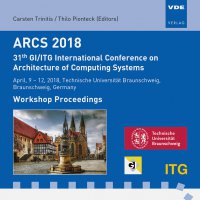The Use of Different Architectures and Streak Observations Algorithms to Detect Space Debris
Konferenz: ARCS Workshop 2018 - 31th International Conference on Architecture of Computing Systems
09.04.2018 - 12.04.2018 in Braunschweig, Germany
Tagungsband: ARCS Workshop 2018
Seiten: 7Sprache: EnglischTyp: PDF
Persönliche VDE-Mitglieder erhalten auf diesen Artikel 10% Rabatt
Autoren:
Vallduriola, Gerard Vives; Scharf, Arthur; Trujillo, Diego Andres Suarez; Helfers, Tim; Daens, Damien (Airbus Defence and Space GmbH, Taufkirchen, Germany)
Pittet, Jean-Noel; Vananti, Alessandro (Astronomical Institute of the University of Bern (AIUB), Bern, Switzerland)
Utzmann, Jens (Airbus Defence and Space GmbH: Immenstaad, Germany)
Inhalt:
Modern society depends heavily on satellite infrastructure. However, Space becomes more and more congested by space debris from over 50 years of space activities. This growing threat in orbit must be monitored. The aim of the ESA GSTP activity „Optical In-Situ Monitor“ is to design and test a breadboard of a space-based space debris camera and to develop and test its end-to-end processing chain. The on-board processing functions will focus on the payload image processing in order to reduce the data volume (image segmentation for streak detection). The suitable technologies for the processing units will be described: the HPDP, an ARM-Cortex R5F processor and Microsemi’s RTG4 FPGA. For image processing, several algorithms were tested extensively: the CCSDS 122.0-B-1, the Boundary Tensor and the Differences Method. This paper shows the current state of the project and gives an overview of what activities still need to be tackled before finalization. The final step of the project will be to decide which combination of processor-algorithm yields the best results.


